In order to conduct chemical and physical experiments and try to study the laws of nature, you don’t have to wait until it’s time to go to school. You can conduct entertaining experiments in the form of a game at home with your children. preschool age. Of course, these will be simple experiments that do not require special knowledge or preparation. They must still be carried out exclusively in the presence of adults in order to avoid unforeseen situations that are dangerous to the lives of children. You can watch some of the experiments listed below and other experiments on video on our website.
Examples
So, let's see what interesting scientific experiments in the form of a game can be done at home?
First of all, let’s decide which substances are fun and safe to conduct experiments at home for preschool children.
- Firstly, with water. You can dissolve various substances in it and observe the manifestation of their properties.
- Secondly, with air.
- And finally, with all available means: soap, soda, salt, rubber, etc.
Water (1 option)
First, let's do a simple experiment with water. To do this experiment you will need:
- a quarter glass of colored water,
- a quarter cup of sunflower oil
- and a quarter glass of syrup.
As a result, while playing, children develop the concept of different densities of liquids.
As a result of the experiments, the following picture should be obtained: the syrup, as the densest liquid, will settle to the bottom, water will be in the middle, and the oil will float to the top.
Home experiments with water are the easiest. They usually consist of mixing various substances with water. With children of preschool and primary school age, you can do another shocking experiment, which, however, is no different from an ordinary boy’s game.
Option 2
Fill the container with water, add a quarter of an Alka-Seltzer tablet, cover with a lid and step aside. It is very interesting to watch how the lid flies off to the side under the pressure of carbon dioxide. You can view similar experiments in the photo.
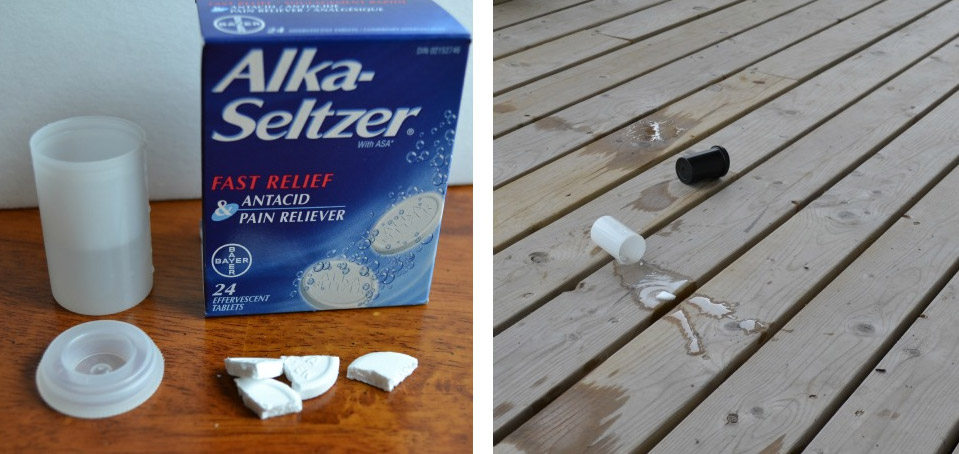
Interesting science experiments can be done at home using a variety of chemicals. Of course, for preschool children, we will not use life-threatening acids or alkalis for play. Interesting experiments are obtained even if you use things familiar from birth: soap, vinegar, salt, etc.
Inflating the balloons
For the following experiments you will need:
- plastic bottle,
- vinegar,
- baking soda,
- balloon,
- funnel.
We begin the experiment by pouring into plastic bottle one and a quarter cups of vinegar. Fill a balloon with three-quarters of a cup of baking soda and attach the balloon to the top of the bottle. Carefully let the soda fall into the bottle and watch how the ball inflates, but it will not fly. Take a video of a similar experiment and show it to your friends: they will probably want to repeat it.
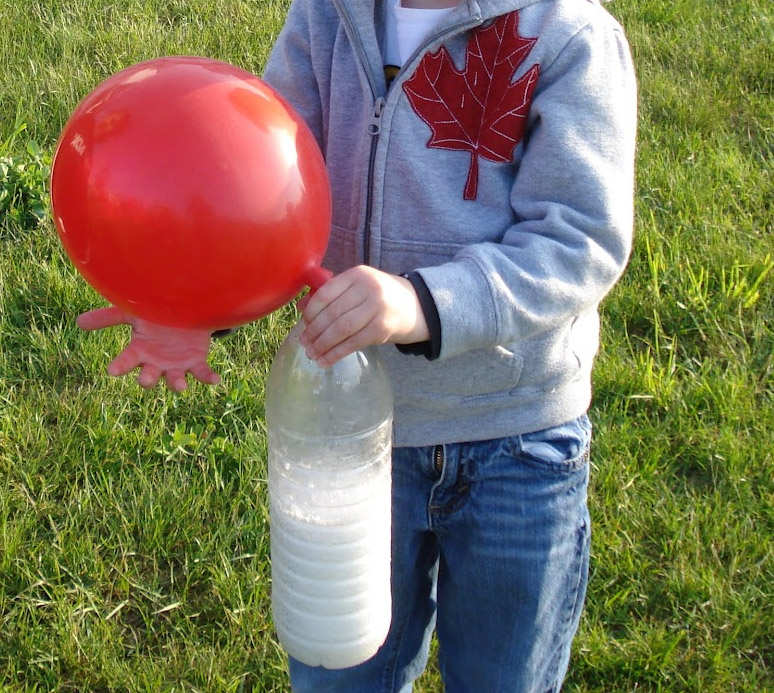
Video
Oil
Interesting experiments can be done with butter. As a result of such experiments, any child will feel like a real wizard. Take a packet of milk cream and pour it into a container with a tight-fitting lid. Close the lid and start whisking. The experiment lasts quite a long time - about 20 minutes. First the cream turns into a thick cream, and then into homemade oil. The child is truly surprised by such a transformation. When the cream thickens, drain off the remaining water by straining through cheesecloth.
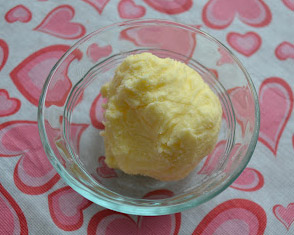
Video on the topic
Entertaining home experiments can provide a lot for the development of preschool children. Scientific experiments carried out in the form of games teach children to be inquisitive, attentive to natural phenomena, and develop erudition. As a result, the child clear example learns the laws of physics and chemistry, which will subsequently be studied at school. Fun experiments for preschool children help reveal their talents and abilities and prepare future scientists.
Plants
Through experiments with plants, children can become familiar with the physical phenomenon of absorption. This is the ability of a material or living being to absorb the constituents of another substance. To conduct the experiment, you will need several stalks of celery and colored water, for example red. Pour water into a glass and drop the celery stalks into it. Of course, this experience takes time. After a few days, the stems will begin to absorb water and turn red in color. If the stems then sprout leaves, they will also be red. Thus, the rather complex theoretical concept of absorption becomes simple and clear thanks to fascinating experiments.
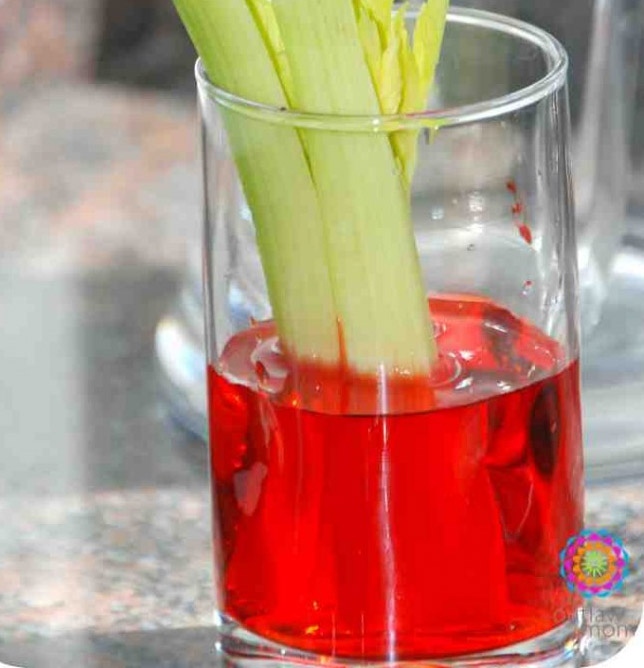
Making jelly
Fun experiments for children can bring not only educational benefits, but also quite material satisfaction. For example, the result of experiments can be the creation of a delicious dish, which will also serve as a teaching aid. Such an experiment is convenient to carry out not only for preschool children, but also for school-age children. We invite you to study with your children the structure of plant and animal cells using... jelly, which can then be eaten by the whole family. For these experiments you will need kitchen sets for making jelly and sets of various small sweets:
- jelly,
- marshmallows,
- caramel.
We open the jelly preparation kits and do everything according to the instructions on the packages. Pour the jelly into molds, preferably square. This will be the basis for our cells. Plant cells can be made green, and animal cells orange. Accordingly, in stores we choose sets of jelly of these colors. When the jelly has hardened, open the sets of candies and lay out the component cells from them. Material about this is easy to find on the Internet or in a school textbook. From such sweet crafts you can make a whole training manual, filming them on video.
- a little milk
- food coloring different colors,
- a piece of soap
- ear sticks
- and a dinner plate.
Pour some milk into a plate. Add food coloring drop by drop various colors to the center of the plate. Dyes can be purchased in liquid form or purchased in powder form, which must then be diluted with water. Next, dip the ear stick into the middle of the milk. Don't mix colors! Place a drop of liquid soap on the other end of the ear stick. Place the soapy end of the stick in the center of the plate and hold for 10-15 seconds. Look at the explosion of colors and colors!
The experience works very simply. Milk has a consistency similar to water, but contains fats, minerals, vitamins and other substances. The secret of a symphony of colors lies in a drop of soap. The fact is that the main property of soap is to eliminate fats. When soap is placed in milk, the soap molecules try to attack the fat molecules, and in turn, the fat molecules try to avoid the “attack.” It is this process that reflects the rapid movement of flowers.
This is what you should get:
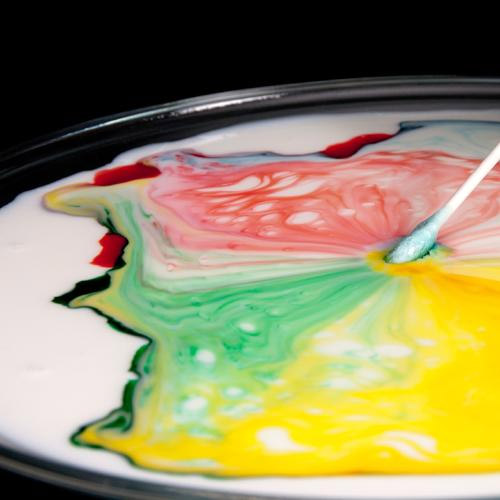
So, experiments for children in the form of games at home are one of the the most important conditions development of erudition and further interest in learning. Even if you are not strong in physics or chemistry, on our website you can find many videos and descriptions of instructions for implementation. At the same time, you do not need expensive sets of chemicals: you will find everything you need at home. Try, observe, experiment!
Who loved chemistry laboratory work at school? It was interesting, after all, to mix something with something and get a new substance. True, it didn’t always work out as described in the textbook, but no one suffered because of this, right? The main thing is that something happens, and we see it right in front of us.
If in real life If you are not a chemist and do not encounter much more complex experiments every day at work, then these experiments, which can be done at home, will definitely amuse you, at least.
Lava lamp
For the experience you need:
— Transparent bottle or vase
— Water
— Sunflower oil
— Food coloring
— Several effervescent tablets “Suprastin”
Mix water with food coloring and add sunflower oil. There is no need to stir, and you won’t be able to. When a clear line between water and oil is visible, throw a couple of Suprastin tablets into the container. We look at the lava flows.
Since the density of oil is lower than that of water, it remains on the surface, with the effervescent tablet creating bubbles that carry water to the surface.
Elephant toothpaste
For the experience you need:
- Bottle
— Small cup
— Water
— Dish detergent or liquid soap
— Hydrogen peroxide
— Fast-acting nutritional yeast
— Food coloring
Mix liquid soap, hydrogen peroxide and food coloring in a bottle. In a separate cup, dilute the yeast with water and pour the resulting mixture into the bottle. We look at the eruption.
Yeast produces oxygen, which reacts with hydrogen and is pushed out. The soap suds create a dense mass that erupts from the bottle.
Hot ice
For the experience you need:
— Capacity for heating
— Transparent glass cup
- Plate
– 200 g baking soda
— 200 ml of acetic acid or 150 ml of its concentrate
— Crystallized salt
Mix in a saucepan acetic acid and soda, wait until the mixture stops sizzling. Turn on the stove and evaporate excess moisture until an oily film appears on the surface. Pour the resulting solution into a clean container and cool to room temperature. Then add a crystal of soda and watch how the water “freezes” and the container becomes hot.
Heated and mixed, vinegar and soda form sodium acetate, which when melted becomes an aqueous solution of sodium acetate. When salt is added to it, it begins to crystallize and generate heat.
Rainbow in milk
For the experience you need:
- Milk
- Plate
— Liquid food coloring in several colors
— Cotton swab
— Detergent
Pour milk into a plate, drip dyes in several places. Wet it cotton swab in detergent, put it in a plate with milk. Let's look at the rainbow.
The liquid part contains a suspension of fat droplets, which, in contact with the detergent, split and rush from the inserted stick in all directions. A regular circle is formed due to surface tension.
Smoke without fire
For the experience you need:
— Hydroperite
— Analgin
— Mortar and pestle (can be replaced with a ceramic cup and spoon)
It is better to do the experiment in a well-ventilated area.
Grind the hydroperite tablets to powder, do the same with analgin. Mix the resulting powders, wait a little, see what happens.
During the reaction, hydrogen sulfide, water and oxygen are formed. This leads to partial hydrolysis with the elimination of methylamine, which interacts with hydrogen sulfide, the suspension of its small crystals resembling smoke.
Pharaoh snake
For the experience you need:
— Calcium gluconate
— Dry fuel
— Matches or lighter
Place several tablets of calcium gluconate on dry fuel and set it on fire. We look at the snakes.
Calcium gluconate decomposes when heated, which leads to an increase in the volume of the mixture.
Non-Newtonian fluid
For the experience you need:
— Mixing bowl
- 200 g corn starch
- 400 ml water
Gradually add water to the starch and stir. Try to make the mixture homogeneous. Now try to roll a ball from the resulting mass and hold it.
The so-called non-Newtonian fluid behaves like a solid when interacting quickly, and like a liquid when interacting slowly.
Home experiments for 4-year-old children require imagination and knowledge of the simple laws of chemistry and physics. “If these sciences were not taught very well at school, you will have to make up for lost time,” many parents will think. This is not so, experiments can be very simple, not requiring special knowledge, skills and reagents, but at the same time explaining the fundamental laws of nature.
Experiments for children at home will help explain the properties of substances and the laws of their interaction using a practical example, and awaken interest in independent exploration of the world around them. Interesting physical experiments will teach children to be observant and help them think logically, establishing patterns between ongoing events and their consequences. Perhaps the kids will not become great chemists, physicists or mathematicians, but they will forever retain warm memories of parental attention in their souls.
Kids like to make appliqués out of paper and draw pictures. Some 4-year-old children learn the art of origami with their parents. Everyone knows that paper is soft or thick, white or colored. What can a regular white sheet of paper do if you experiment with it?
An animated paper flower
Cut out a star from a sheet of paper. Its rays bend inward in the form of a flower. Fill a cup with water and lower the star onto the surface of the water. After a while paper flower, as if alive, will begin to open up. The water will wet the cellulose fibers that make up the paper and spread them out.
Strong bridge
This paper experiment will be interesting for children 3 years old. Ask your kids how to place an apple in the middle of a thin sheet of paper between two glasses so that it doesn't fall. How can you make a paper bridge strong enough to support the weight of an apple? We fold a sheet of paper into an accordion shape and place it on the supports. Now it can support the weight of the apple. This can be explained by the fact that the shape of the structure has changed, which made the paper strong enough. The properties of materials that become stronger depending on their shape are the basis for the designs of many architectural creations, for example, the Eiffel Tower.
An animated snake
Scientific evidence of the upward movement of warm air can be provided using simple experiment. A snake is cut out of paper by cutting a circle in a spiral. You can revive a paper snake very simply. A small hole is made in her head and suspended by a thread above a heat source (battery, heater, burning candle). The snake will begin to rotate quickly. The reason for this phenomenon is the upward warm flow of air, which unwinds the paper snake. This is exactly how you can make paper birds or butterflies, beautiful and colorful, by hanging them under the ceiling in your apartment. They will rotate from the movement of air, as if flying.
Who is stronger
This fun experiment will help you determine which paper shape is stronger. For the experiment you will need three sheets of office paper, glue and several thin books. A cylindrical column is glued from one sheet of paper, a triangular column from another, and a rectangular column from the third. They place the “columns” vertically and test them for strength, carefully placing books on top. As a result of the experiment, it turns out that the triangular column is the weakest, and the cylindrical column is the strongest - it will withstand the greatest weight. It is not for nothing that columns in churches and buildings are made in a cylindrical shape; the load on them is distributed evenly over the entire area.
Amazing salt
Regular salt is found in every home today; no meal can be prepared without it. You can try making beautiful children's crafts from this affordable product. All you need is salt, water, wire and a little patience.
Salt has interesting properties. It can attract water to itself, dissolving in it, thereby increasing the density of the solution. But in a supersaturated solution, the salt again turns into crystals.
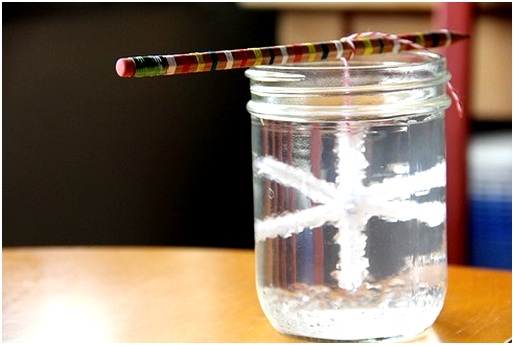
To conduct an experiment with salt, bend a beautiful symmetrical snowflake or other figure from a wire. Dissolve salt in a jar of warm water until it stops dissolving. Dip a bent wire into a jar and place it in the shade for several days. As a result, the wire will become overgrown with salt crystals, and will look like a beautiful ice snowflake that will not melt.
Water and ice
Water exists in three states of aggregation: steam, liquid and ice. The purpose of this experiment is to introduce children to the properties of water and ice and compare them.
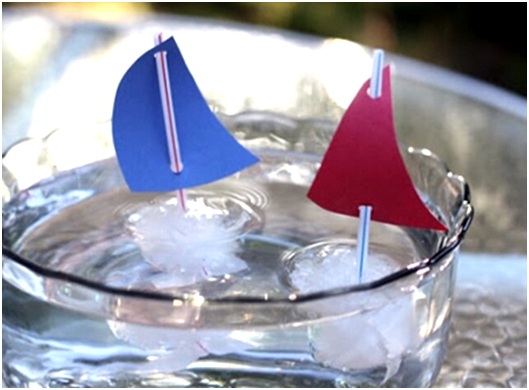
Pour water into 4 ice trays and place them in the freezer. To make it more interesting, you can tint the water with different dyes before freezing. Pour cold water into a cup and throw two ice cubes into it. Simple ice boats or icebergs will float on the surface of the water. This experiment will prove that ice is lighter than water.
While the boats are floating, the remaining ice cubes are sprinkled with salt. They'll see what happens. After a short time, before the indoor float in the cup has time to sink (if the water is quite cold), the cubes sprinkled with salt will begin to crumble. This is explained by the fact that the freezing point of salt water is lower than normal water.
Fire that doesn't burn
In ancient times, when Egypt was a powerful country, Moses fled from the wrath of Pharaoh and tended flocks in the desert. One day he saw a strange bush that was burning and did not burn. It was a special fire. Can objects that are engulfed in ordinary flame remain safe and sound? Yes, this is possible, this can be proven through experience.
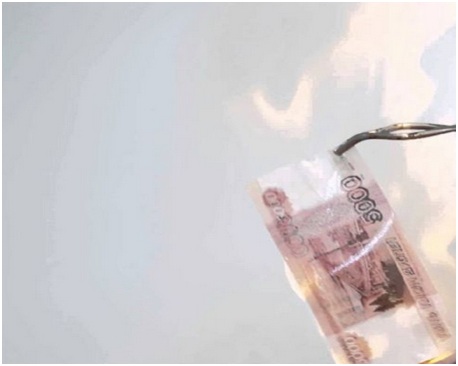
For the experiment you will need a sheet of paper or a banknote. A tablespoon of alcohol and two tablespoons of water. The paper is moistened with water so that the water is absorbed into it, alcohol is poured on top and set on fire. Fire appears. This is burning alcohol. When the fire goes out, the paper will remain intact. The experimental result is explained very simply - the combustion temperature of alcohol, as a rule, is not enough to evaporate the moisture with which the paper is impregnated.
Natural indicators
If your child wants to feel like a real chemist, you can make special paper for him that will change color depending on the acidity of the environment.
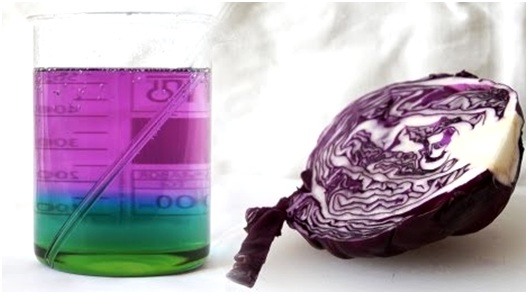
The natural indicator is prepared from the juice of red cabbage, which contains anthocyanin. This substance changes color depending on what liquid it comes into contact with. In an acidic solution, paper soaked in anthocyanin will turn yellow, in a neutral solution it will turn green, and in an alkaline solution it will turn blue.
To prepare a natural indicator, take filter paper, a head of red cabbage, cheesecloth and scissors. Chop the cabbage thinly and squeeze the juice through cheesecloth, squeezing it with your hands. Soak a sheet of paper in juice and dry. Then cut the made indicator into strips. The child can dip a piece of paper into four different liquids: milk, juice, tea or soap solution, and watch how the color of the indicator changes.
Electrification by friction
In ancient times, people noticed the special ability of amber to attract light objects if rubbed with a woolen cloth. They did not yet have knowledge about electricity, so they explained this property by the spirit living in the stone. It is from the Greek name for amber – electron – that the word electricity comes.
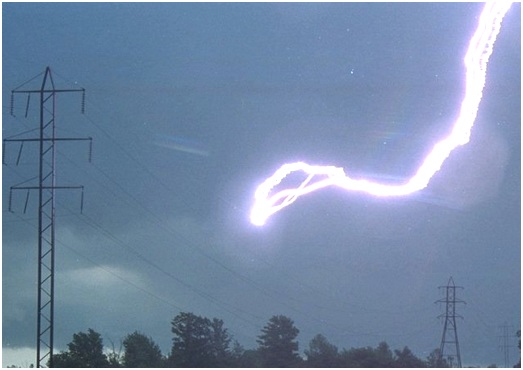
It’s not just amber that has such amazing properties. You can conduct a simple experiment to see how a glass rod or plastic comb attracts small pieces of paper. To do this, rub the glass with silk and the plastic with wool. They will begin to attract small pieces of paper that will stick to them. Over time, this ability of items will disappear.
You can discuss with children that this phenomenon occurs due to electrification by friction. If fabric rubs quickly against an object, sparks may appear. Lightning in the sky and thunder are also a consequence of friction of air currents and the occurrence of electrical discharges in the atmosphere.
Solutions of different densities - interesting details
You can get a multi-colored rainbow in a glass from liquids of different colors by preparing jelly and pouring it layer by layer. But there is a simpler way, although not as tasty.
To carry out the experiment you will need sugar, vegetable oil, plain water and dyes. Concentrated sweet syrup is prepared from sugar, and clean water is colored with dye. Sugar syrup is poured into a glass, then clean water is poured carefully along the wall of the glass so that the liquids do not mix, and vegetable oil is added at the end. The sugar syrup should be cold and the colored water should be warm. All liquids will remain in the glass like a small rainbow, without mixing with each other. The thickest sugar syrup will be at the bottom, the water will be at the top, and the lightest oil will be on top of the water.
Color explosion
Another interesting experiment can be carried out using different densities of vegetable oil and water, creating a color explosion in a jar. For the experiment you will need a jar of water, a few tablespoons of vegetable oil, and food coloring. In a small container, mix several dry food colors with two tablespoons of vegetable oil. Dry grains of dyes do not dissolve in oil. Now the oil is poured into a jar of water. Heavy grains of dyes will settle to the bottom, gradually freeing themselves from the oil, which will remain on the surface of the water, forming colored swirls, as if from an explosion.
Home volcano
Useful geographic knowledge may not be so boring for a four-year-old if you provide a visual demonstration of a volcano erupting on an island. To carry out the experiment you will need baking soda, vinegar, 50 ml of water and the same amount of detergent.
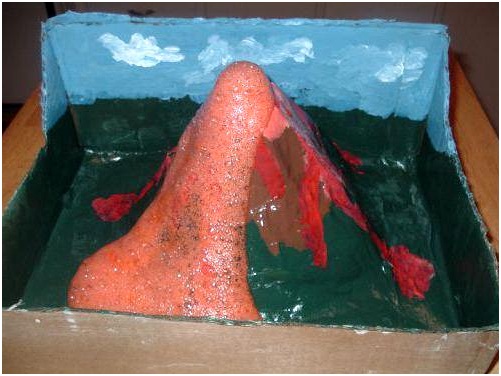
A small plastic cup or bottle is placed in the mouth of a volcano, molded from colored plasticine. But first they pour it into the glass baking soda, pour water tinted red and detergent. When the improvised volcano is ready, a little vinegar is poured into its mouth. A rapid foaming process begins due to the fact that soda and vinegar react. “Lava” formed by red foam begins to pour out of the volcano’s mouth.
Experiments for 4-year-old children, as you have seen, do not require complex reagents. But they are no less fascinating, especially with an interesting story about the reason for what is happening.
The Ghostbusters remake is coming out very soon, and this is a great excuse to rewatch the old film and study non-Newtonian fluids. One of the film's heroes, the silly ghost Lizun, is a good image for visualization. This is a character who loves to eat, and he also knows how to penetrate walls.
We will need:
- potato,
- tonic.
What we do
Cut the potatoes very finely (you can chop them in a food processor) and add hot water. After 10-15 minutes, drain the water through a sieve into a clean bowl and set aside. A sediment will appear at the bottom - starch. Drain the water; the starch will remain in the bowl. In principle, you will already have a non-Newtonian fluid. You can play with it and watch how it hardens under your hands and becomes liquid on its own. You can also add food coloring for bright color.
Trevor Cox/Flickr.comNow let's add a little magic.
The starch needs to be dried (leaved for a couple of days). And then add tonic to it and make a kind of dough that is easy to pick up. It will retain its consistency in your palms, but if you stop and stop kneading it, it will begin to spread.
If you turn on the ultraviolet lamp, you and your child will see the dough begin to glow. This is due to the quinine found in tonic water. It looks magical: a glowing substance that behaves as if it violates all the laws of physics.
2. Get superpowers
Comic book heroes are especially popular now, so your child will love feeling like the powerful Magneto, who can control metals.
We will need:
- printer toner,
- magnet,
- vegetable oil.
What we do
From the very beginning, be prepared for the fact that after this experiment you will need a lot of napkins or rags - it will be quite dirty.
Pour about 50 ml of laser printer toner into a small container. Add two tablespoons of vegetable oil and mix very well. Done - you have in your hands a liquid that will react to a magnet.
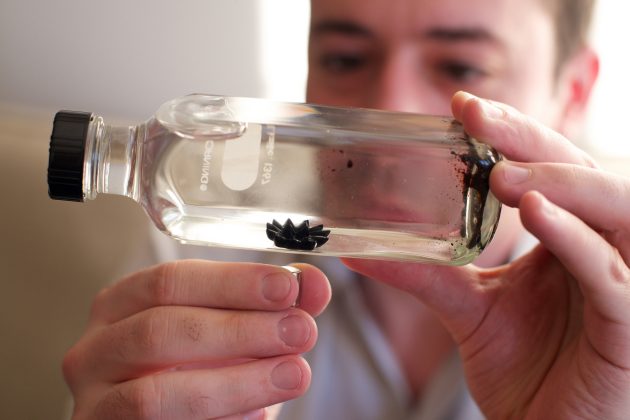 Jerald San Hose/Flickr.com
Jerald San Hose/Flickr.com You can attach a magnet to the container and watch how the liquid literally sticks to the wall, forming a funny “hedgehog”. It will be even more interesting if you find a board on which you don’t mind pouring a little black mixture, and invite your child to use a magnet to control the drop of toner.
3. Turn milk into a cow
Invite your child to turn liquid into solid without resorting to freezing. This is a very simple and impressive experience, although you will have to wait a couple of days to get the results. But what an effect!
We will need:
- cup ,
- vinegar.
What we do
Heat a glass of milk in the microwave or on the stove. We don't boil. Then you need to add a tablespoon of vinegar to it. Now let's start stirring things up. Actively move the spoon in the glass to see white clots appear. This is casein, a protein found in milk.
When there are a lot of clots, drain the mixture through a sieve. Whatever remains in the colander needs to be shaken, then placed on a paper towel and dried a little. Then start kneading the material with your hands. It will look like dough or clay. At this stage, you can add food coloring or glitter to make the white mass brighter and more interesting for your baby.
Invite your child to make something from this material - a figurine of an animal (for example, a cow) or some other object. But you can simply put the mass in a plastic form. Leave to dry for a day or two.
When the mass dries, you will have a figurine made of very hard hypoallergenic material. This type of “homemade plastic” was used until the 1930s. Casein was used to make jewelry, accessories, and buttons.
4. Control snakes
Getting vinegar and baking soda to react is just about the most boring experience imaginable. “Volcanoes” and “fizzy drinks” will not be of interest to modern children. But you can invite your child to become a “snake lord” and show how acid and alkali actually react.
We will need:
- pack of gummy worms,
- soda,
- vinegar.
What we do
Take two large transparent glasses. Pour water into one and add soda. Mix. Open the package of gummy worms. It’s better to cut each of them lengthwise and make them thinner. Then the experience will be more spectacular.
Thin worms should be placed in a mixture of water and soda and mixed. Set aside for 5 minutes.
Pour vinegar into another glass. Now we add to this vessel the worms that were in the glass with soda. Because of the soda, bubbles will be visible on their surface. This means there is a reaction. The more worms you add to the glass, the more gas will be released. And after some time, the bubbles will lift the worms to the surface. Add more soda - the reaction will be more active and the worms themselves will begin to crawl out of the glass. Cool!
5. Make a hologram like in Star Wars
Of course, it is difficult to create a real hologram at home. But its likeness is quite real and not even very difficult. You will learn to use the properties of light and turn 2D pictures into three-dimensional images.
We will need:
- smartphone,
- CD box,
- stationery knife,
- scotch,
- paper,
- pencil.
What we do
You need to draw a trapezoid on paper. The drawing can be seen in the photo: the length of the lower side of the trapezoid is 6 cm, the upper side is 1 cm.
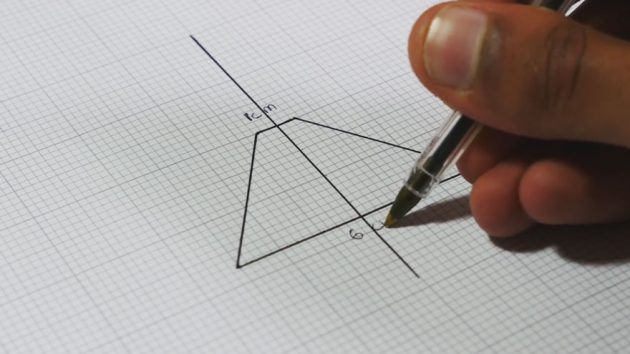 BoredPanda.com
BoredPanda.com Carefully cut out a trapezoid from paper and take out the CD box. We need the transparent part of it. Attach the pattern to the plastic and use a utility knife to cut a trapezoid out of the plastic. Repeat three more times - we will need four identical transparent elements.
Now they need to be glued together with tape so that it looks like a funnel or a truncated pyramid.
Take your smartphone and run one of the such videos. Place the plastic pyramid with the narrow part down in the center of the screen. Inside you will see a “hologram”.
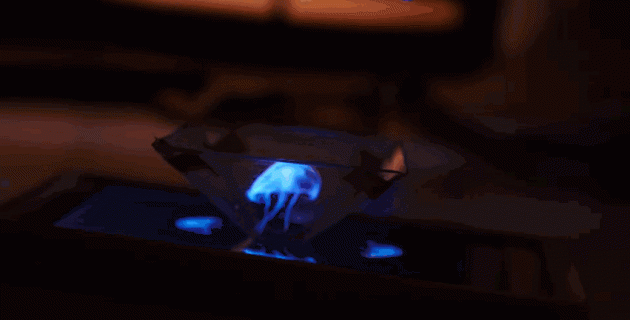 Giphy.com
Giphy.com You can start a video with characters from Star Wars and, for example, recreate the famous recording of Princess Leia or admire own miniature BB-8.
6. Get away with it
Every child can build a sand castle on the seashore. How about we line it up under water? Along the way, you can learn the concept of “hydrophobic.”
We will need:
- colored sand for aquariums (you can also take regular sand, but it needs to be washed and dried),
- hydrophobic shoe spray.
What we do
Carefully pour the sand onto a large plate or baking sheet. We apply a hydrophobic spray to it. We do this very carefully: spray, mix, repeat several times. The task is simple - make sure that every grain of sand is enveloped in a protective layer.
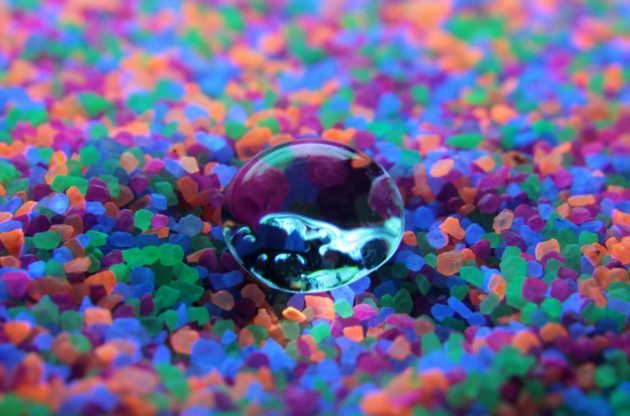 University of Exeter/Flickr.com
University of Exeter/Flickr.com When the sand dries, collect it in a bottle or bag. Take a large container for water (for example, a jar with a wide neck or an aquarium). Show your child how hydrophobic sand “works”. If you pour it in a thin stream into water, it will sink to the bottom but remain dry. This is easy to check: let the baby take some sand from the bottom of the container. As soon as the sand rises from the water, it will crumble in the palm of your hand.
7. Keep information secret better than James Bond
Writing secret messages with lemon juice is a thing of the past. There is another way to make invisible ink, which also allows you to learn a little more about the reaction of iodine and starch.
We will need:
- paper,
- brush.
What we do
First, cook the rice. The porridge can be eaten later, but we need a decoction - it contains a lot of starch. Dip your brush into it and write a secret message on the paper, such as “I know who ate all the cookies yesterday.” Wait for the paper to dry. Starchy letters will be invisible. To decipher the message, you need to moisten another brush or cotton swab in a solution of iodine and water and run it over what is written. Because of chemical reaction Blue letters will begin to appear on the paper. Voila!
Greetings, dear readers. Today I propose to experiment a little and conduct fun experiments for children.
I bring to your attention a small part of our scientific works. The experiments that will be described below can easily be done at home. There is nothing complicated. The main thing is to have free time and a desire to learn something new.
It was interesting for me to watch our experiments, and even more so for the children. The elder, of course, was skeptical about the process and did not expect a miracle. But the younger one was delighted. So these experiments will be interesting for younger children.
I think that it will be interesting for children 2 years old and 3 years old, as well as 4, 5, 6 years old.
The most important thing in such experiments is the explanation of this or that process, the search for the reason why it turned out this way. After the experiment, it is better to ask the child why this particular outcome of events turned out and not otherwise.
Children can come up with a wide variety of versions, some of which will definitely be funny.
Well, let's get started.
Experiment with paper and water: capillarity
We will need this paper flower and a container of water.
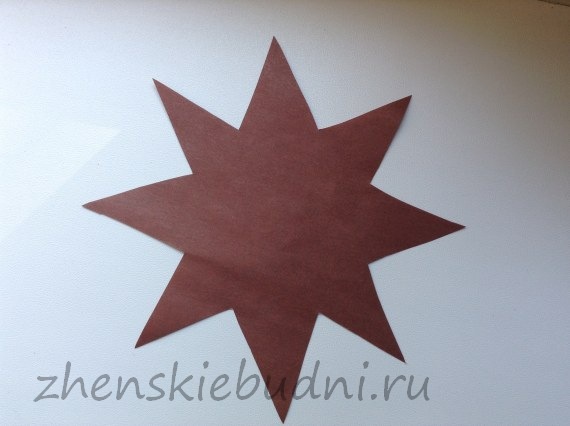
We bend the petals towards the center.
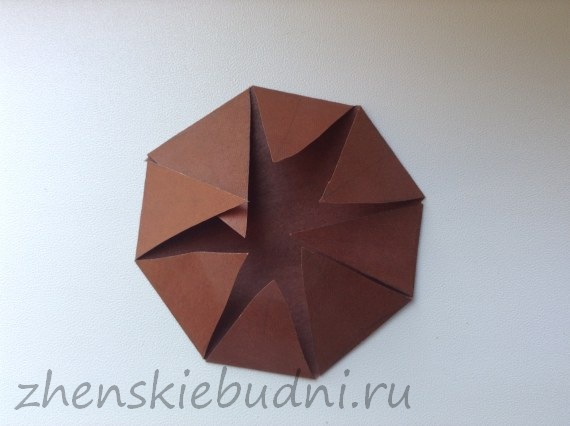
Let's put the flower in the water and watch how the petals gradually open. It seems like a simple movement, but it’s so funny that the opening occurs without our participation.
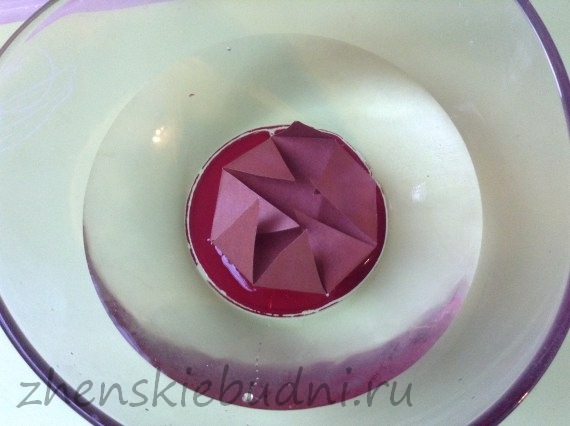
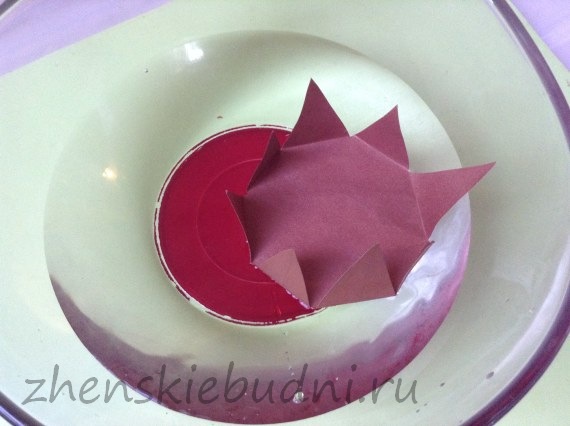
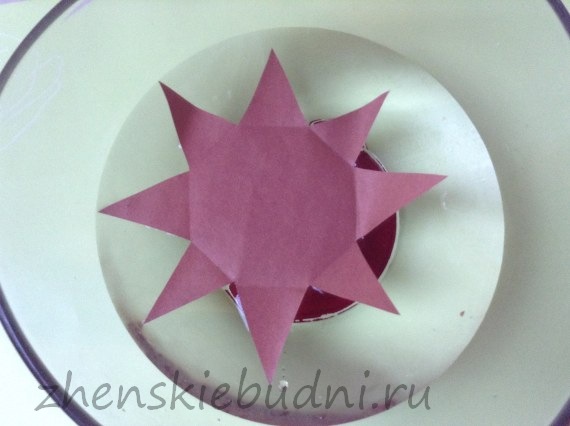
Now I’m writing an article and I’m thinking that I should make a flower from several layers of petals. The opening will look more impressive. But just how to do it?
Why did the petals open?
This is explained by the fact that water, which has capillarity, is able to penetrate into a very small space between the fibers of the paper, gradually filling it. It turns out that the paper gets wet, swells and the folds begin to straighten. As a result, we can watch the flower opening.
Experiment with water and egg: density
I propose to do this interesting experiment at home with different densities of water (salt and tap).
An egg sinks in plain tap water, but floats to the surface in salt water. But if we change the salt concentration, we can achieve an intermediate position of the egg (I mean not at the bottom, but not at the surface either).
So, pour water and lower the egg. It sinks because the egg is denser than water.
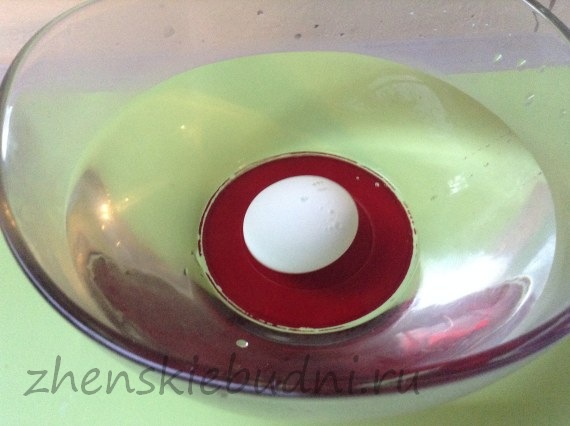
Add salt to the water, 10 tablespoons. Mix.
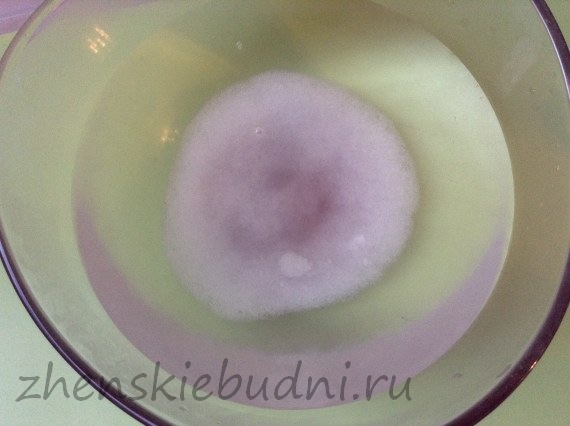
Let the egg bathe again. As a result, it does not sink. This time the density of the salt water is higher.
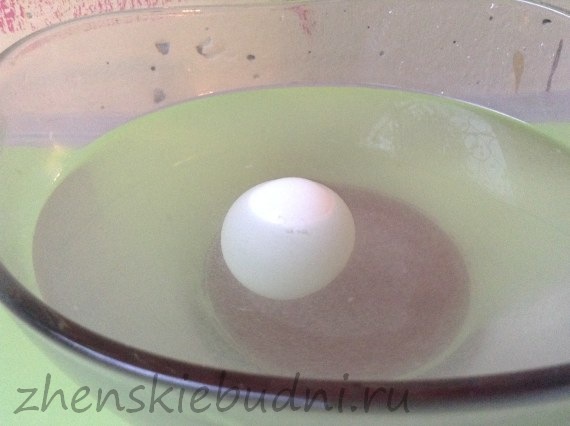
Then we slowly begin to add water from the tap.
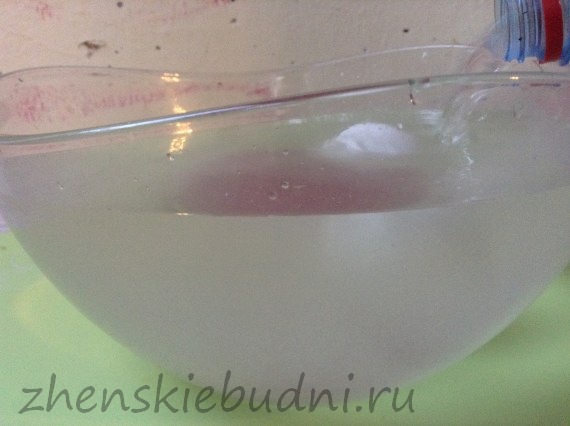
And as a result, the egg takes a middle position, a suspended state.
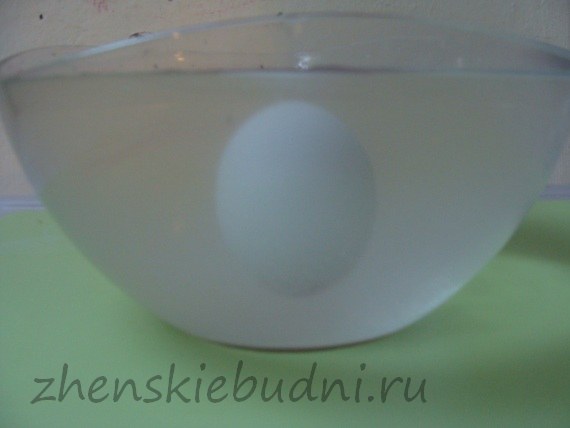
The density of the egg is less than that of salted eggs, but greater than that of tap eggs.
Experiment with paper: stiffeners
Before starting the experiment, we tell the child that before building a bridge, you need to calculate the structure. There are a lot of things that need to be taken into account: the force of friction, stress, the tensile strength of the material, the terrain conditions, and much more.
Now we’ll make a bridge for the apple out of paper.
Can a piece of paper support an apple?
Let's check it out.
We will need two glasses, two sheets of paper and one apple.
Fold one sheet of paper like an accordion.
We put two glasses with a sheet of paper on them.
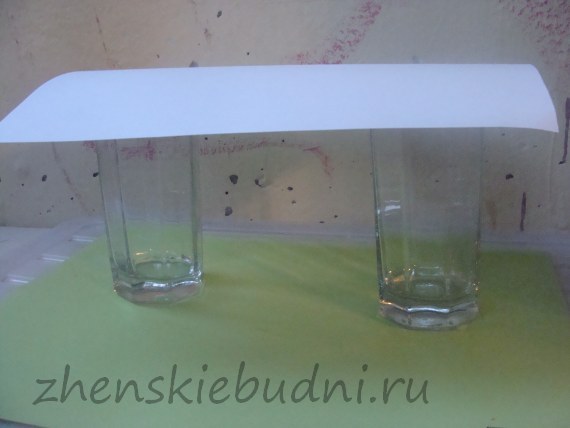
Put an apple and
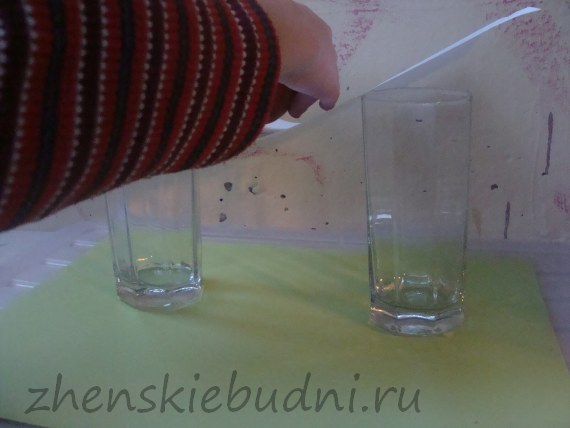
... well, the result is predictable.
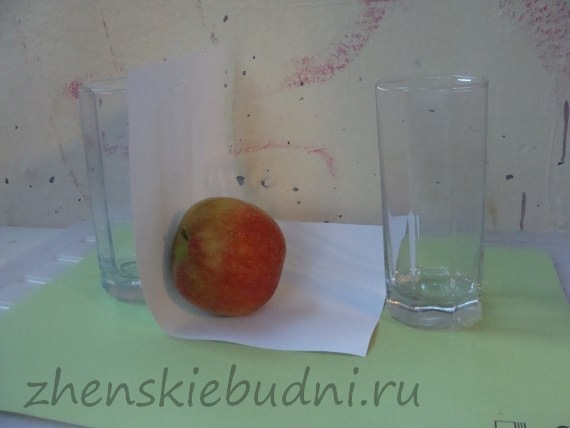
Second try.
But this time we will have a bridge made of accordion-folded paper.
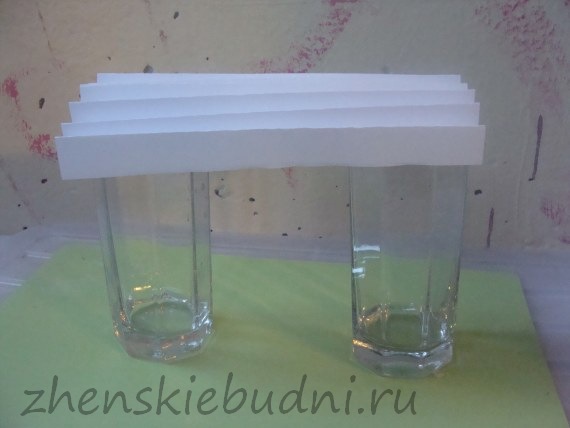
Oops la. And an apple on the bridge.
The stiffening ribs that appeared on the bends made the structure strong and the bridge was able to support an apple.
Experience with paper: form strength
Columns have been used as supports since ancient times. Let's check which form of support is more durable.
We will hold a support competition.
The competition includes: cylinder, square prism, triangular prism.
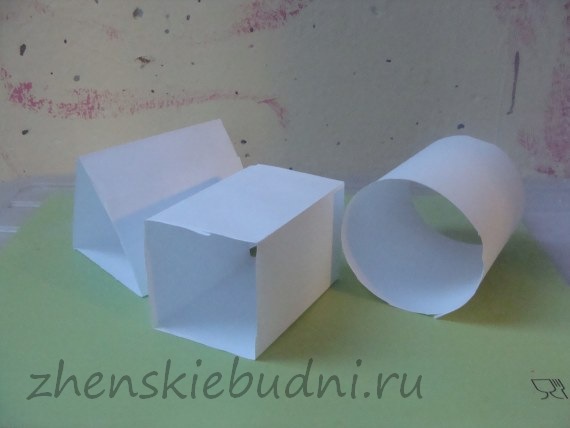
By the way, before starting the experiment, try to guess which column is stronger. This question can be asked not only to children, but also to adults.
- Our dad guessed right.
The first to be called into the ring is the square prism.
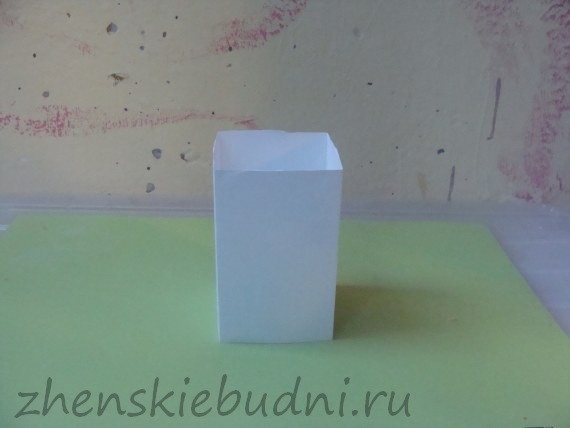
One book...
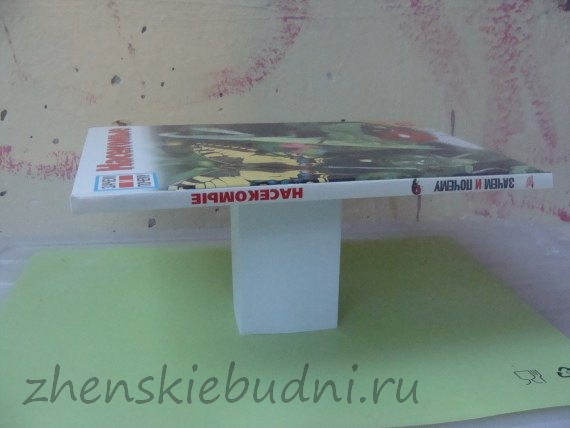
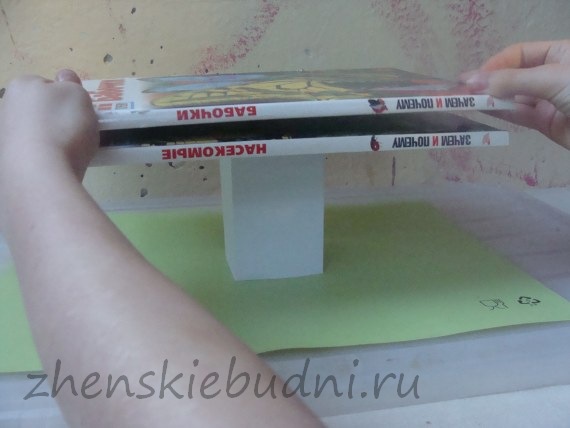
![]()
Result: finished 2 books.
The next participant is a triangular prism.
One book...
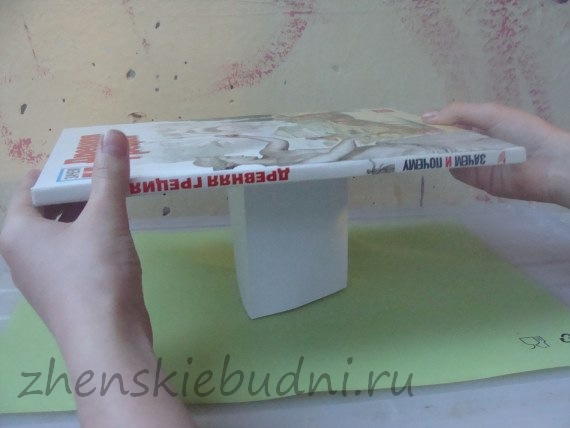
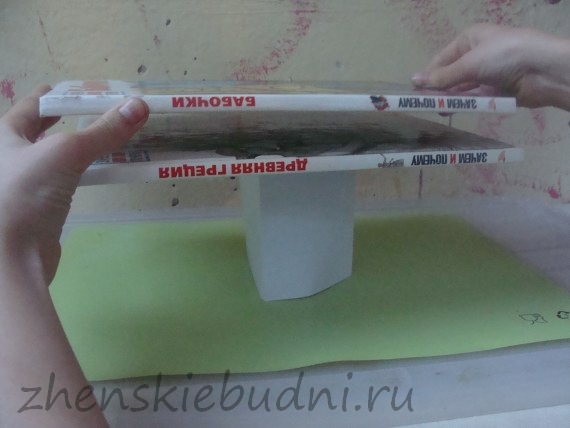
And the fighter surrendered.
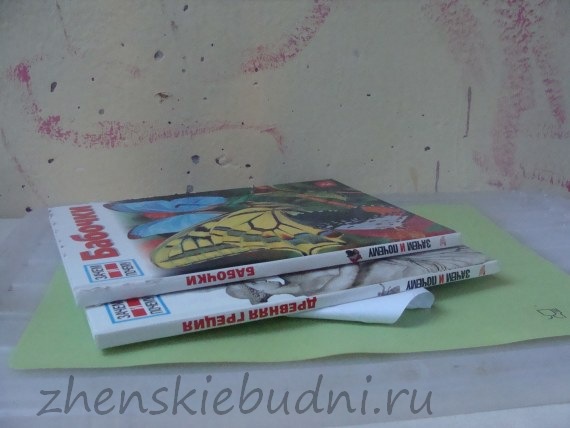
Result – 1 book
And finally, the third participant is the cylinder
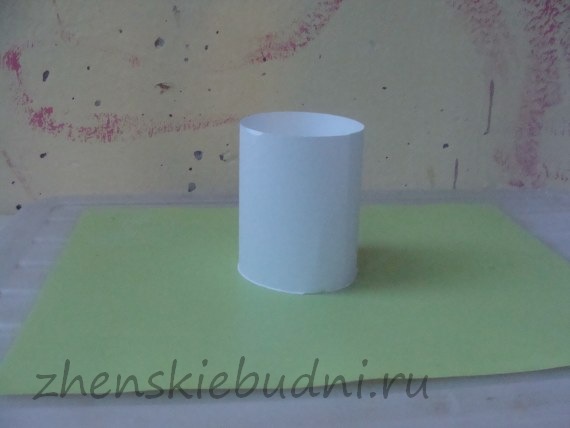
One book...
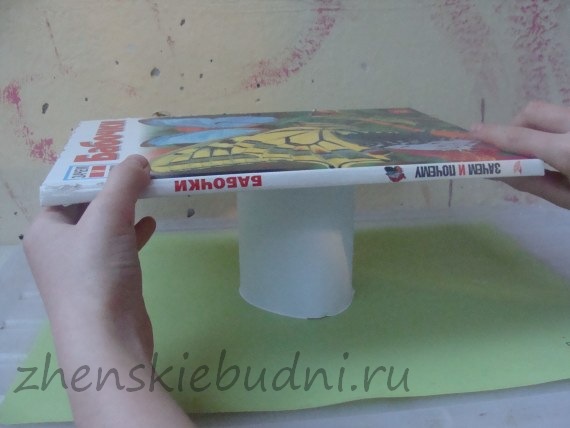
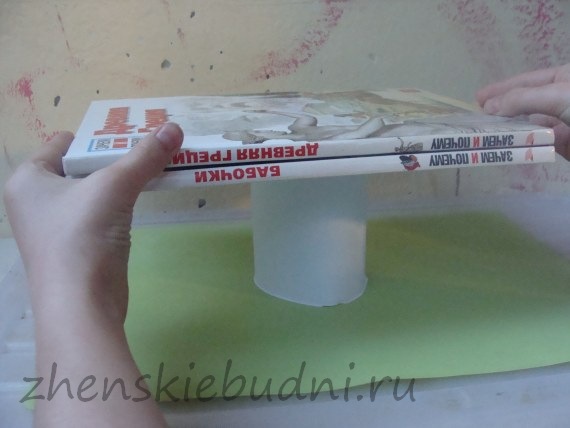
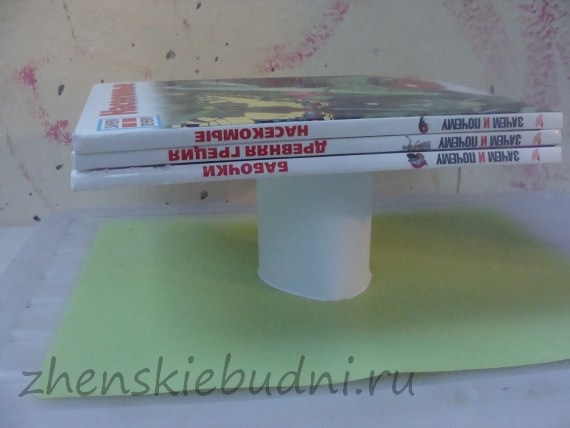
Goes for a record
Fourth...
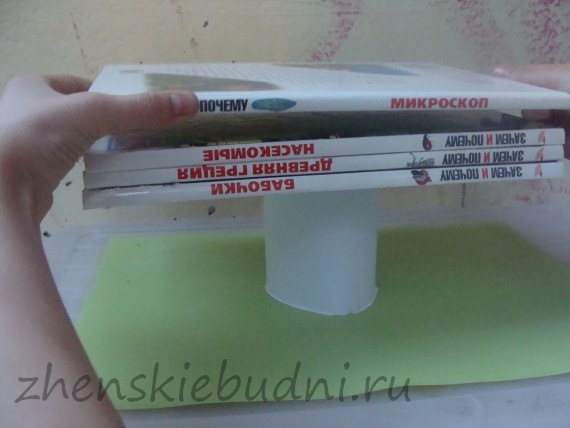
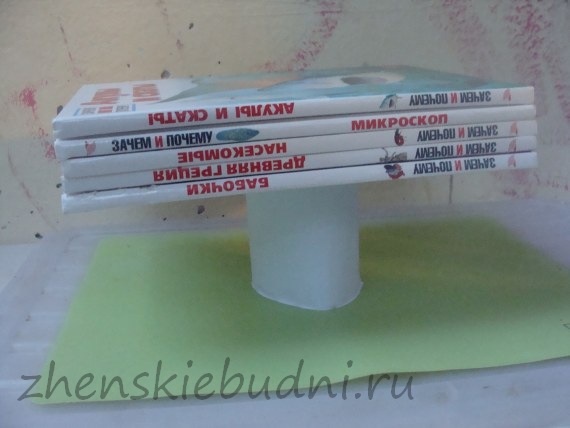
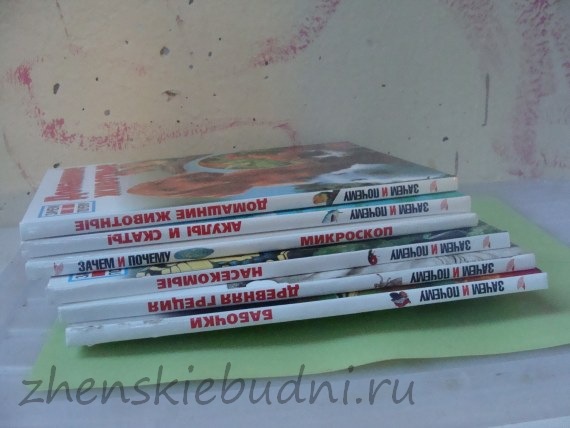
Result: five books.
The winner is the cylinder. And that's not surprising.
After all, its weight of books is distributed more evenly over the walls than that of a triangular and square prism.
Who were you rooting for?
Experiment with paper, milk and candle
Let's play spies. We write something on a sheet of paper with a thin brush and milk.
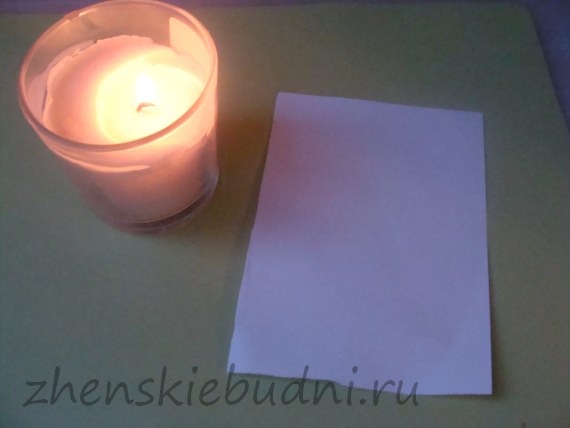
Then we bring a sheet of paper to the burning candle. If you have a long candle, then hold it to the side of the candle. If it's on top, the paper may burn. In any case, you need to be on your guard. It is best to place a container of water nearby. You never know.
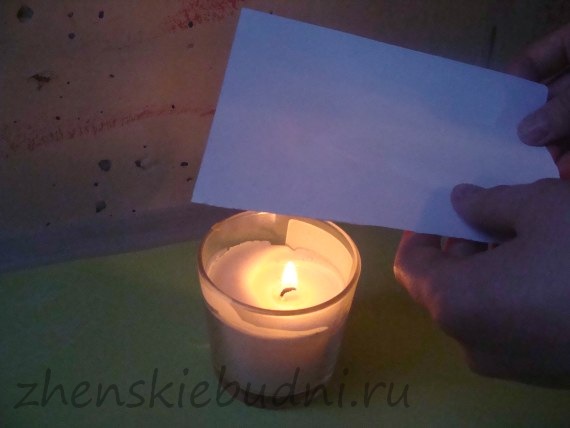
Most safe way To reveal spy recordings, simply iron the paper with a hot iron.
But, really, with a candle there is more mystery.
When heated, the letters darken. This is where the properties of the fat found in milk come into play. Fat darkens when heated.
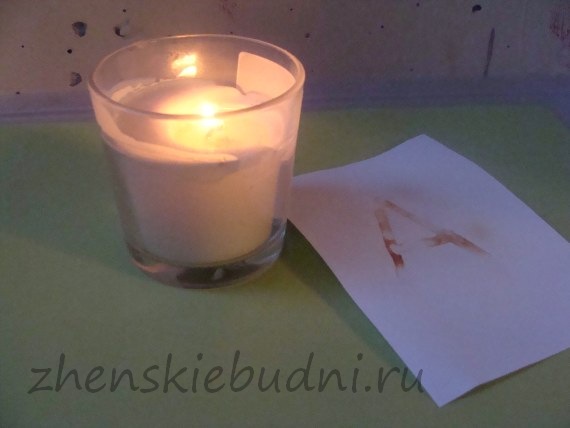
These are the simplest physical chemical experiments you can spend it with your children at home.
Share in the comments what worked for you and what didn’t. Well, most importantly, did the children like it?
Subscribe to blog updates and see you next time.



